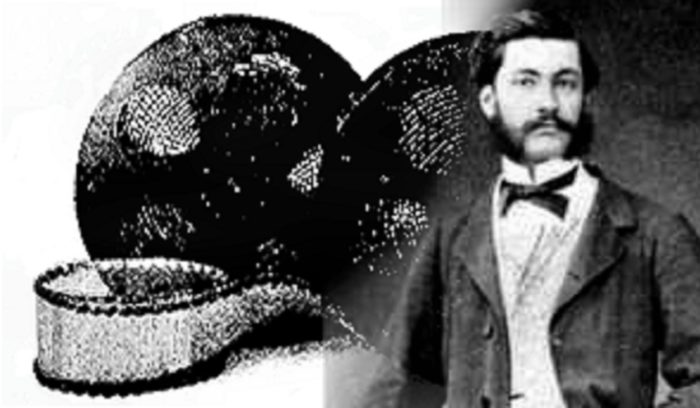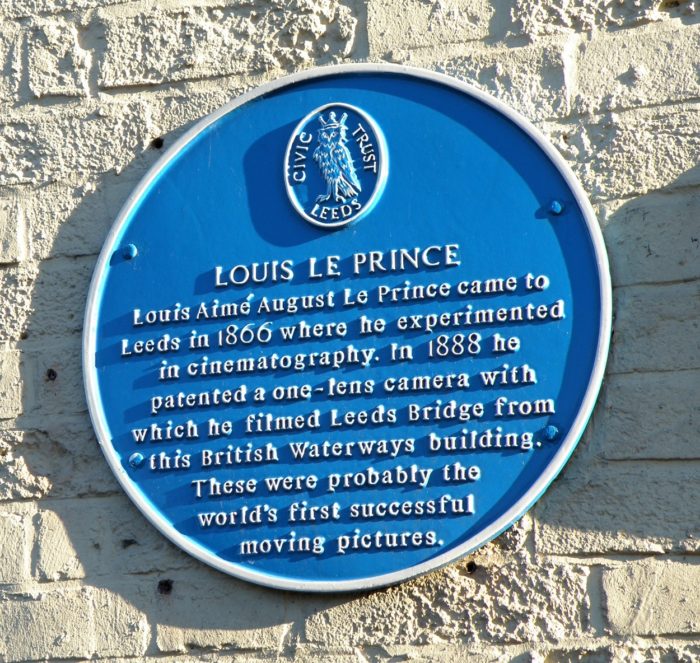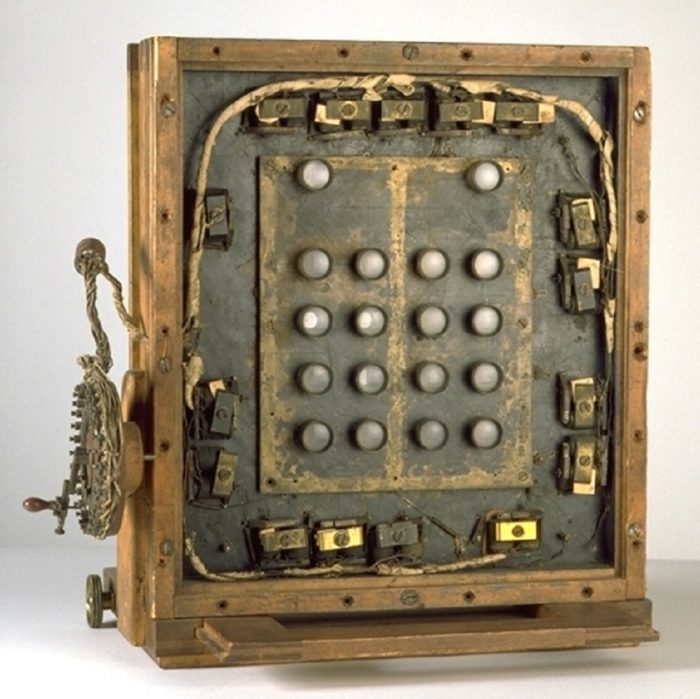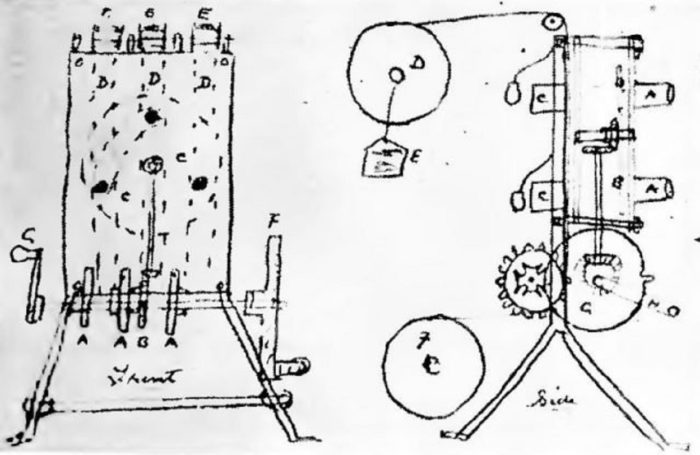
The Unexplained Disappearance Of Louis Le Prince, The “Father Of Cinematography”
- By
- June 19, 2020
- September 28, 2021
- 6 min read
- 1
- Posted in
- Conspiracy Theory Analysis, Unsolved & Unexplained
The disappearance of Louis Le Prince not only remains unexplained almost a century and a half later, but it is one that is also highly suspect. Perhaps not least as he was due to patent a new invention at the time of his disappearance. Indeed, the mystery surrounding the last days of the French artist continues to fascinate researchers today.

Louis le Prince (Louis Aimé Augustin Leprince)
There are numerous rumors surrounding his disappearance and what might have become of him. Aside from the obvious theory that someone was looking to prevent such a patent occurring so they might scoop the fame and financial reward for themselves, others claim his disappearance was a part of an elaborate scheme so he could relocate elsewhere and start his life anew.
What is perhaps lost in the mysterious vanishing of Le Prince is the early contributions he undoubtedly made to motion pictures, with some people even referring to Le Price as the true “Father of Cinematography”. And what’s more, although there was no overriding influence on the glitzy blockbuster cinema classics that have been enjoyed over the decades since the early twentieth century, the early work and demonstrations of what was perhaps the first motion camera took place in a place far from the sun-kissed terrain of Hollywood.
Contents
From Leeds To Dijon Train Station, To Where?
The best place to join the story of Louis Le Prince (who many refer to as Augustin Le Prince) is right before his disappearance. In the years leading up to him seemingly vanishing into thin air, Le Prince was living in Leeds in Yorkshire, England. It is here where he developed his motion picture camera. [1] Indeed, many film historians state that it could be argued that the true beginnings of cinematography can be traced back to the unlikely industrial Yorkshire city in northern Victorian England.
He would test his new invention by filming short scenes of life in Leeds, including the famous Roundhay Garden Scene in October 1888. By 1890 he was preparing to demonstrate the pictures in New York. However, not yet patented, in September 1890 while in Dijon in France he would make arrangements to travel back to London to do so.
It is at Dijon Train Station on the afternoon of 16th September where he was last seen alive by his brother, Albert, who helped him into the station from where he would travel to Paris and then arrange further travel to London. However, when the train in question arrived in the French capital, Le Prince had seemingly vanished. What’s more, not only wasn’t he on board, but there was also no sign of any of his luggage.
There are many theories as to what had happened, including that Le Prince had caught a different train than planned. However, what had taken place, essentially remains a complete mystery. Incidentally, Le Prince nor his luggage were ever found.
You can check out footage of the Roundhay Garden Scene below.
An Elaborate Suicide? Not Likely!
Despite several thorough investigations by Le Prince’s family and French and British police, no sign of the missing artist ever surfaced. There were, though, a small plethora of theories as to what had happened once Le Prince entered the Dijon station, as well as the reasons why.
Perhaps the easiest explanation was that Le Prince had taken his own life. Those who subscribe to such theories suggest that he was heavily in debt and so had arranged the elaborate suicide so that his body and his belongings would disappear forever.

Plaque on the building in Leeds, West Yorkshire, where Le Prince experimented with his devices
However, many people point out that not only were his business interests relatively profitable but that he was almost certain to find financial security with his soon-to-be patented new invention. [2] Furthermore, if he was indeed in debt so severely that he would feel the need to take his own life, then the cost of such a detail-orientated and complex final mission would surely have taken at least a small (but significant) amount of money.
Furthermore, he was, generally speaking, in good spirits and looking forward to the success he would surely find with his new invention. Aside from the fact that there is no real, sound explanation as to just how he might have succeeded in such a plan, given what we know of Le Prince’s life, it simply appears unlikely.
A “Planned” Disappearance
If not suicide, then, that should alert us to the potential for foul play. And there are indeed suggestions from some corners that just such an end had befallen Le Prince. Before we examine some of those, however, we will turn our attention to another proposed explanation for the inventor’s disappearance. That he relocated elsewhere in order to “save” the family name.
According to some research, Le Prince’s family discovered he was homosexual and so, with his agreement, arranged for him to disappear to Chicago in the United States. Although it is true that homosexuality was illegal in the late 1800s in Great Britain (and would remain so until the 1960s), and social attitudes were generally speaking, unforgiving of such a discovery, the fact is there is no proof that Le Prince was homosexual, or that he would give up his potential fortune in order to cover up such a discovery. Nor is there any proof that the family had any such feelings or had made any such arrangements.

Le Prince’s 16-lens camera
There are some claims that Le Prince did die in Chicago (in the late 1890s), but once more, there is no proof to back up these claims as nothing more than hearsay.
If we can discount the notion that Le Prince didn’t arrange his own disappearance whether to do with his sexuality or otherwise – and we almost certainly can – then we should refocus back to the notion that rather than take his own life somewhere between Dijon and Paris, he was the victim of murder.
A Victim Of Murder Amid The “Patent Wars”
It is perhaps easiest to look at the notion that Le Prince was murdered at some point after entering Dijon station. And while such a murder could have been a result of pure chance – that he was merely in the wrong place at the wrong time – it is hard to ignore that fact that should he not make it London in order to patent his new invention, that path would be clear for someone else to do so. And reap huge financial rewards a short time later.
In fact, one researcher – Christopher Rawlence in The Missing Reel – examined several of these theories, including the apparent suspicions of Le Prince’s surviving family that the “official” inventor of the motion picture camera, Thomas Edison, might have had some involvement in this speculative murder. We should note, though, that Rawlence himself believed the most likely scenario was suicide.

Blueprints of Le Prince’s work
It is, however, a fact that the family of Le Prince did challenge Edison’s patents as the “sole inventor” of the motion camera in courts. And after initially ruling in his favor, this was eventually overturned. Whether or not there was any accuracy in the notion that Edison was somehow involved in the Frenchmen’s disappearance or not – directly or indirectly – to some, remains open for debate.
It is perhaps also interesting to note that Le Prince’s son, Adolphus, who had assisted his father closely during his film experiments and was crucial to the family’s legal case against Edison, was also discovered shot to death on the outskirts of New York on Fire Island. He was duck shooting at the time of his death, leading to it being ruled accidental. However, at least one person, his mother and Le Prince’s husband, believed Adolphus’ death was also the result of murder.
A Mystery That Will Remain So
Whatever did happen following Le Prince entering the train station in Dijon that September afternoon remains a mystery, and likely will for the foreseeable future.
Did he take his own life? It is certainly not that much of a stretch of the imagination, although surely unlikely, especially the elaborate nature of his body and luggage completely disappearing into thin air.
Or perhaps it makes more sense that, whether planned or opportunistic, the inventor was the victim of murder. Whether to prevent the patenting of the motion camera, or merely to rob him. Or perhaps he was the victim of a random disagreement that took place on the train it is thought he boarded.
We should perhaps also note that in 2003 a photograph of an unknown person who had drowned in the late nineteenth century was discovered in the Paris police photo archives. Some believe the person had a distinct resemblance to Louis Le Prince.
If this person was indeed Le Prince, does that add more weight to the suicide theory or the murder one? If Le Prince had somehow jumped to his death from the train (or even if he had done so from elsewhere) it perhaps doesn’t make sense that he would do so with his luggage. However, if he was murdered and his body dumped in the waterways in and around Paris, it is perhaps more believable that the perpetrator would also discard his luggage in the same way.
Check out the video below. It looks at the fascinating life and mysterious death of Louis Le Prince in more detail.
References
| ↑1 | The Mystery of Louis Le Prince, The Father of Cinematography, Kieron Casey, Science+ Media Museum, August 29th, 2013 https://blog.scienceandmediamuseum.org.uk/louis-le-prince-created-the-first-ever-moving-pictures/ |
|---|---|
| ↑2 | Louis Le Prince: The Unsolved Disappearance of the Father of Cinema, William Hopson, Film Inquiry, January 7th, 2020 https://www.filminquiry.com/louis-le-prince/ |
Fact Checking/Disclaimer
The stories, accounts, and discussions in this article may go against currently accepted science and common beliefs. The details included in the article are based on the reports, accounts and documentation available as provided by witnesses and publications - sources/references are published above.
We do not aim to prove nor disprove any of the theories, cases, or reports. You should read this article with an open mind and come to a conclusion yourself. Our motto always is, "you make up your own mind". Read more about how we fact-check content here.
Copyright & Republishing Policy
The entire article and the contents within are published by, wholly-owned and copyright of UFO Insight. The author does not own the rights to this content.
You may republish short quotes from this article with a reference back to the original UFO Insight article here as the source. You may not republish the article in its entirety.





1 Comment
UFO Insight does not take responsibility for the content of the comments below. We take care of filtering profanity as much as we can. The opinions and discussion in the comments below are not the views of UFO Insight, they are the views of the individual posting the comment.
Newest comments appear first, oldest at the bottom. Post a new comment!
Edison was most likely behind it. He was a notorious patent thief.